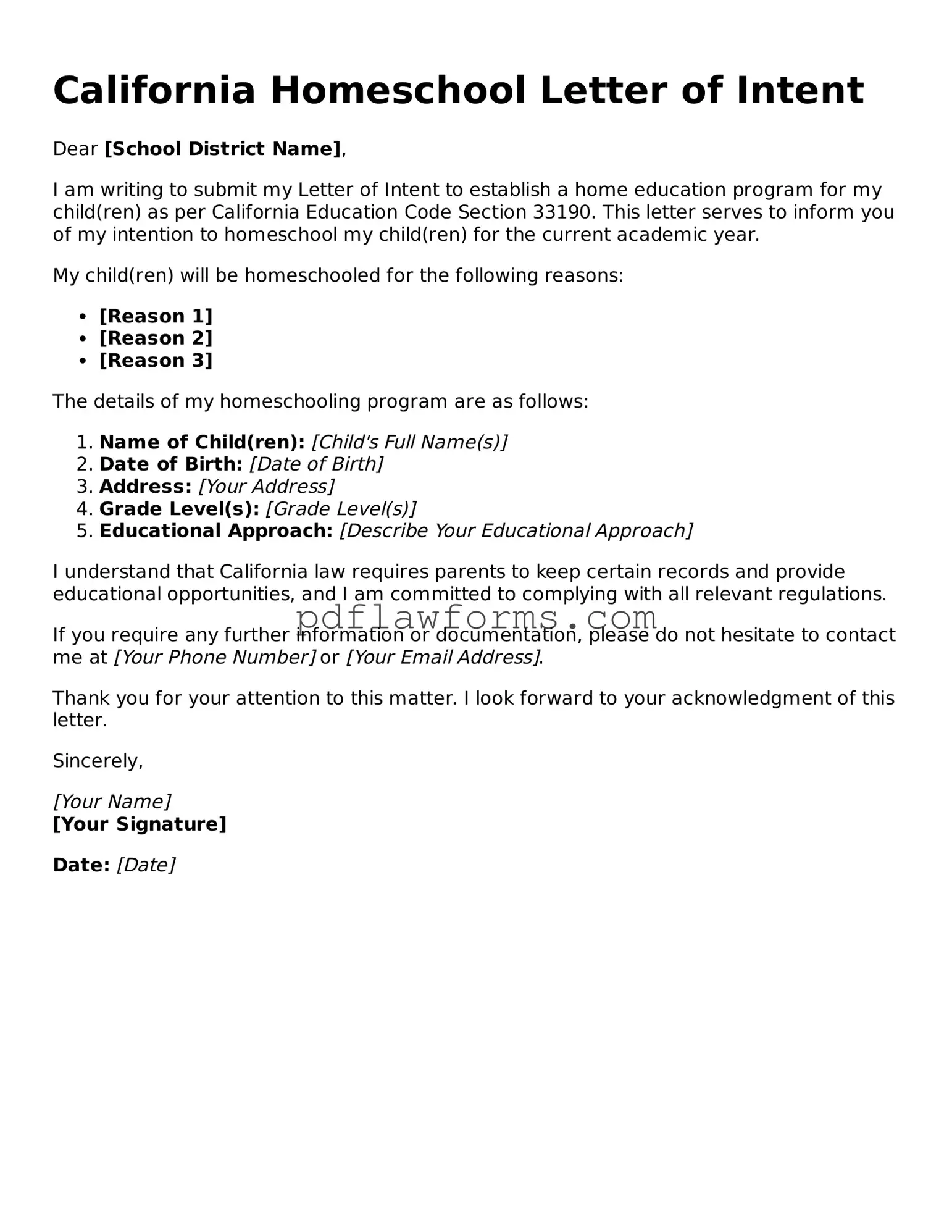In California, families who choose to homeschool their children must navigate various legal requirements, one of which is the submission of a Homeschool Letter of Intent form. This document serves as a formal notification to the local school district of a parent's decision to educate their child at home. It typically includes essential information such as the name and address of the student, the name of the parent or guardian, and the grade level of the child. The form is a critical step in establishing a homeschooling program, as it ensures compliance with state laws while also affirming the parent's commitment to providing a quality education outside of traditional school settings. While the form itself is relatively straightforward, understanding its implications and the responsibilities it entails is vital for families embarking on this educational journey. By submitting the Homeschool Letter of Intent, parents not only fulfill a legal obligation but also set the foundation for a tailored educational experience that aligns with their family’s values and goals.
